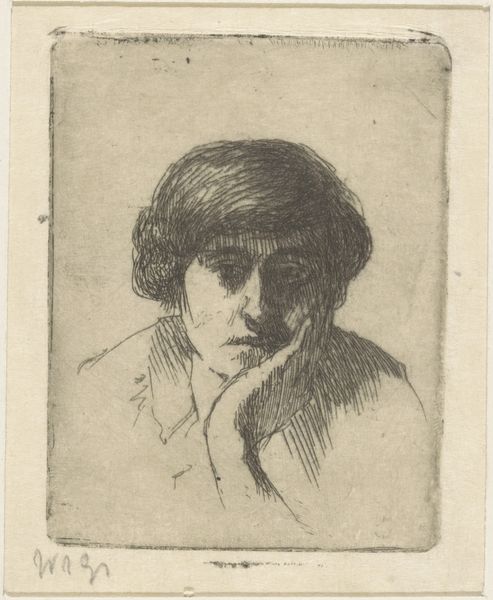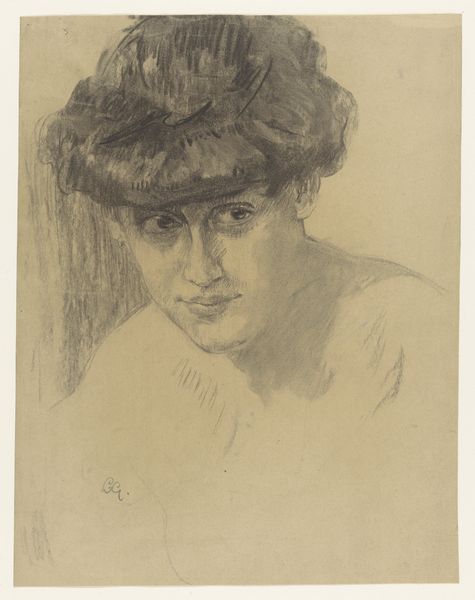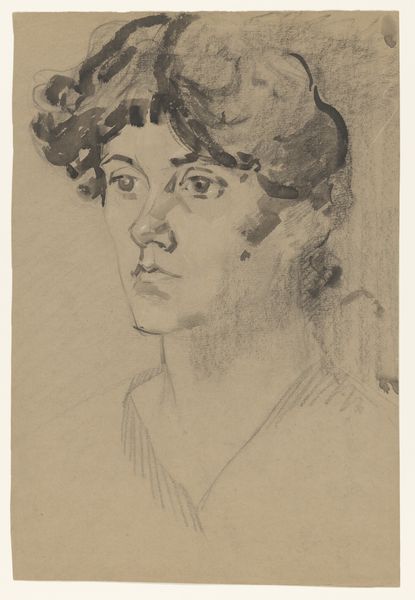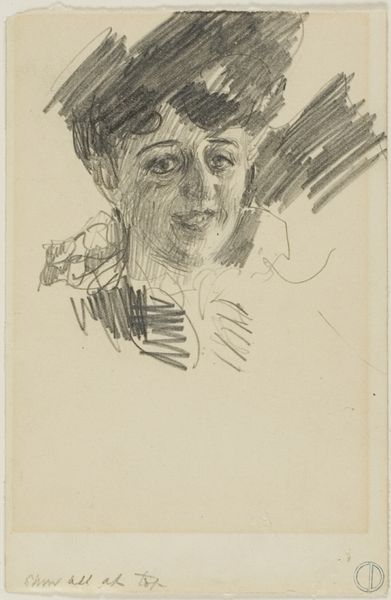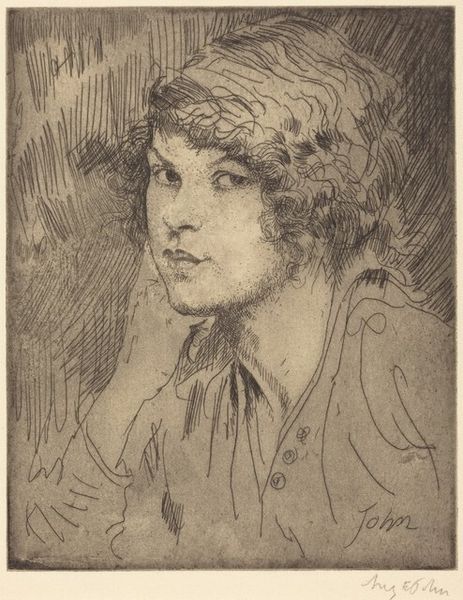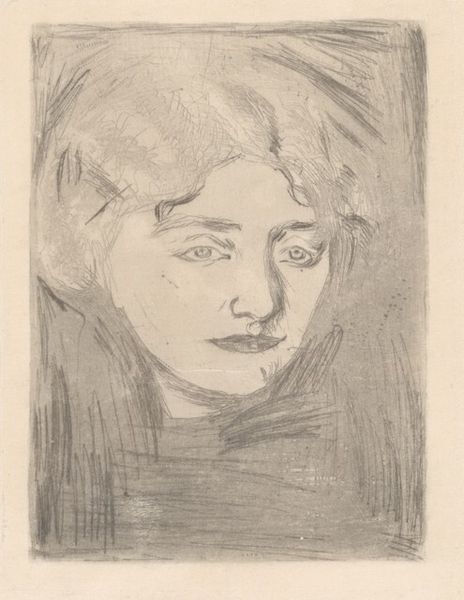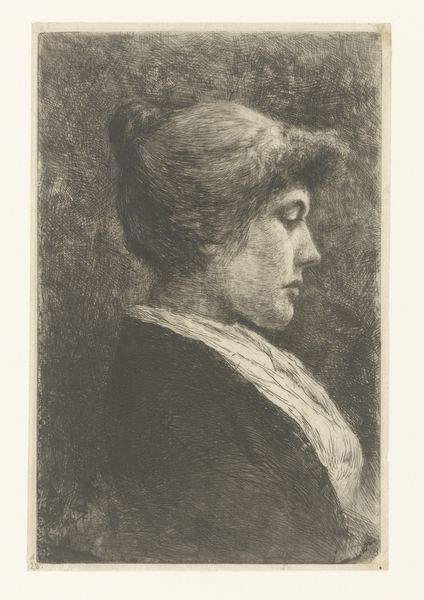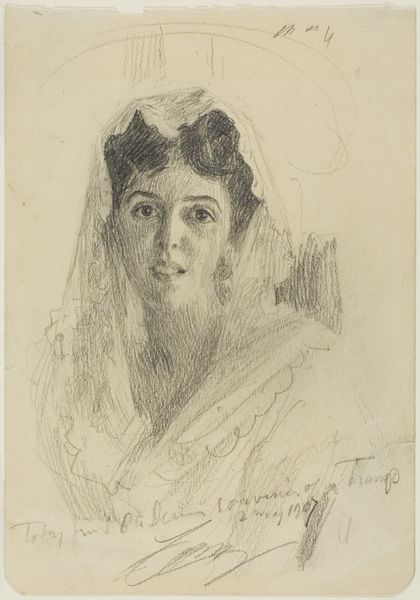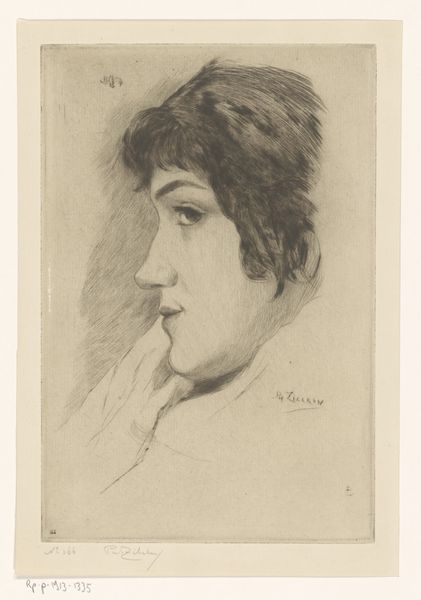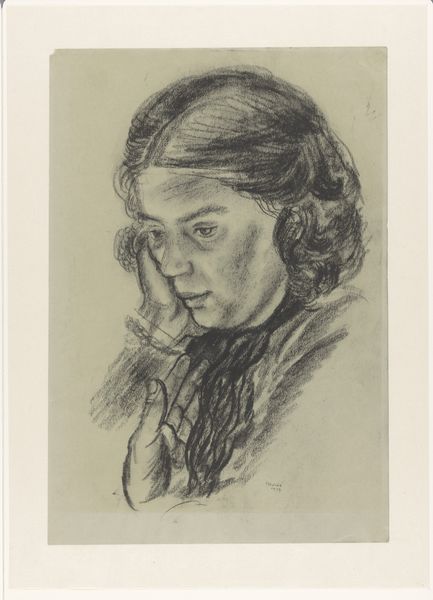
drawing, print, etching
#
portrait
#
drawing
# print
#
etching
#
pencil drawing
#
realism
Dimensions: height 108 mm, width 92 mm
Copyright: Rijks Museum: Open Domain
Curator: Willem Adrianus Grondhout created this etching and print titled "Portret van een onbekende vrouw" sometime between 1888 and 1934. It is currently held at the Rijksmuseum. Editor: Her eyes just pierce right through you, don’t they? A little haunting, maybe a touch melancholic. I wonder what she was thinking in that moment, or if she even knew she was being observed. Curator: The portrait certainly possesses a psychological depth, perhaps intended. Grondhout worked during a time when portraiture moved beyond mere likeness. Etching, particularly, lent itself to exploring inner states of being. Editor: There's something beautifully unfinished about the technique, isn't there? Like capturing a fleeting thought, a fragment of a soul. And "unknown woman," oh, that adds another layer of mystery! Like she's all women, all stories untold. Curator: Precisely. The title, of course, is telling. Without the anchor of identity, viewers are invited to project their own interpretations, influenced by societal conventions and perceptions of women during that period. Think of the late 19th and early 20th century context of changing roles and emerging female voices. Editor: I see that delicate ruffled collar, like a soft cage, perhaps. This drawing reminds me of those quiet afternoons when you could hear the distant echoes of someone playing piano; just this little feeling that you cannot really grasp and retain. Curator: An interesting interpretation! Her expression—subtle yet arresting—certainly allows for a reading of contained experience and restrained emotion, quite typical representation of womanhood, perhaps bound by conventions, both physically and psychologically. Editor: Right, but art offers the unique chance to glimpse something timeless beyond that, doesn’t it? I think that every stroke contains so much longing. What do you make of it all? Curator: Art's public role invites continuous interrogation, doesn't it? Each age approaches a work of art informed by its social and ideological conditions, reinterpreting and renegotiating the artwork's meaning in relation to the here and now. It seems that for you it invites daydreaming, doesn't it? Editor: Definitely!
Comments
No comments
Be the first to comment and join the conversation on the ultimate creative platform.
